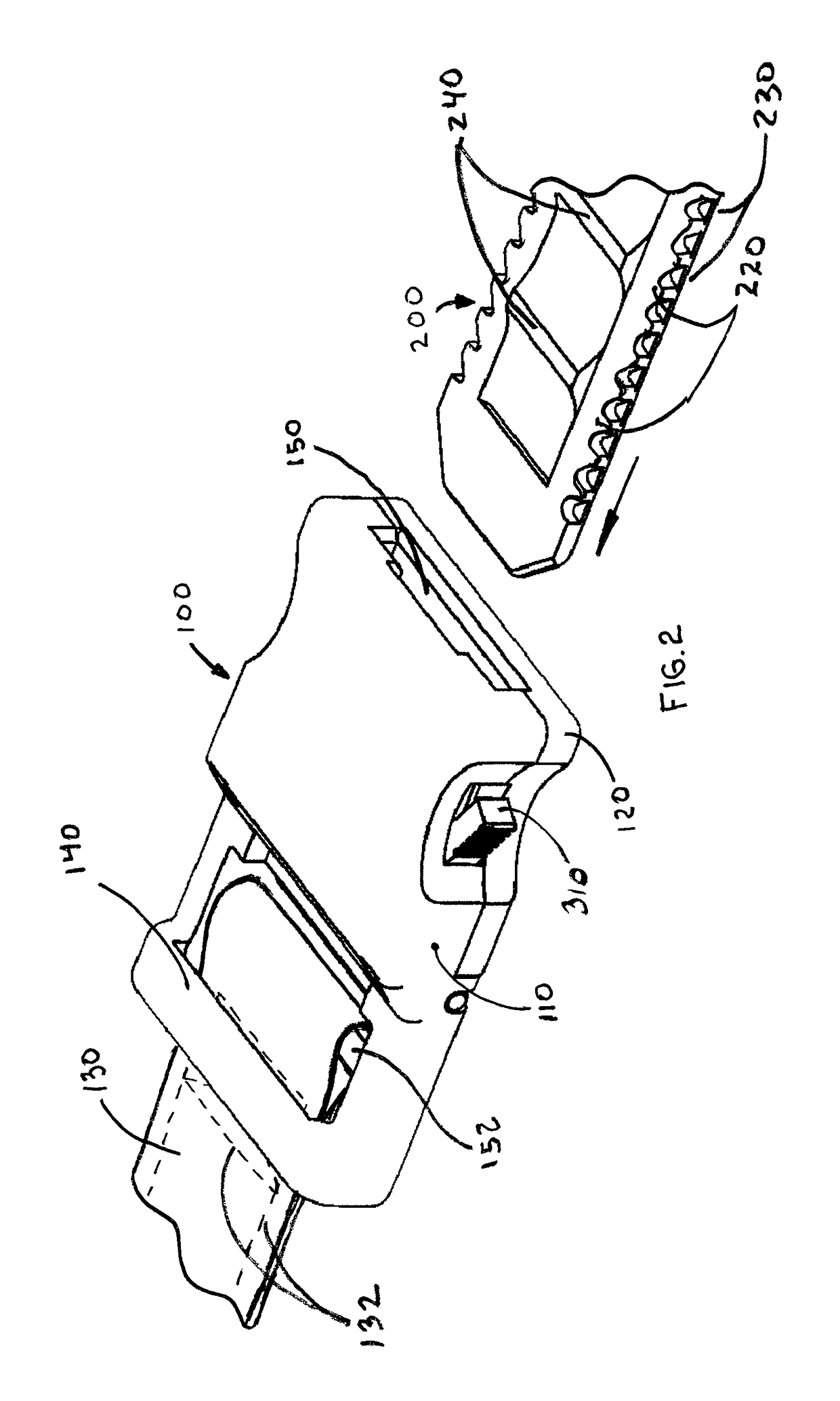Side release buckle fastener with semi rigid insertion structure
a technology of insertion structure and side release buckle, which is applied in the direction of garment fasteners, fastenings, helmets, etc., can solve the problems of limiting the ability for finer incremental adjustments, time-consuming, and cumbersome disconnection
- Summary
- Abstract
- Description
- Claims
- Application Information
AI Technical Summary
Benefits of technology
Problems solved by technology
Method used
Image
Examples
Embodiment Construction
. [1-6]
[0023]The belt embodiment has a receiving enclosure assembly part 100 and an insertion structure part 200. Insertion part has an eyelet opening 210 to connect to a belt 130 and receiving part has crossbar 152 also for connecting to the belt. Belts can be configured for permanent attachment via stitching 132 to both insertion and receiving parts. Alternatively both the receiving part and insertion part may include several belt openings for and adjustable connection to an open ended belt.
[0024]The receiving enclosure has a top cover 110 and a bottom cover 120, and laterally located inverted latches 310 and 320. The receiving part also has an insertion opening 150 and an exit opening 160. Preferably insertion part is made of plastic material such as Nylon or Delrin thus providing flexibility yet good structural integrity for small features such as bosses and ridges. The receiving part can be made of metal or plastic depending on application requirements and cost targets.
[0025]Ad...
PUM
 Login to View More
Login to View More Abstract
Description
Claims
Application Information
 Login to View More
Login to View More - R&D
- Intellectual Property
- Life Sciences
- Materials
- Tech Scout
- Unparalleled Data Quality
- Higher Quality Content
- 60% Fewer Hallucinations
Browse by: Latest US Patents, China's latest patents, Technical Efficacy Thesaurus, Application Domain, Technology Topic, Popular Technical Reports.
© 2025 PatSnap. All rights reserved.Legal|Privacy policy|Modern Slavery Act Transparency Statement|Sitemap|About US| Contact US: help@patsnap.com



